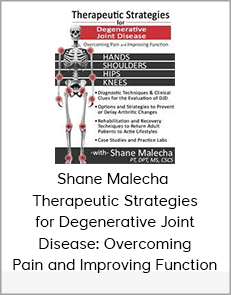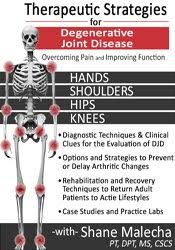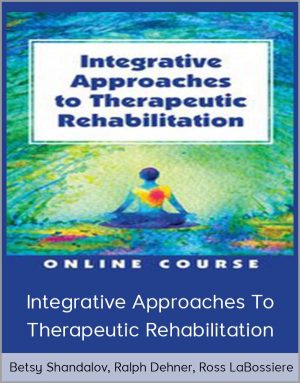Shane Malecha – Therapeutic Strategies for Degenerative Joint Disease: Overcoming Pain and Improving Function
$65.00$219.00 (-70%)
Identify strategies to share with patients to optimally prevent or delay changes in arthritis.
Shane Malecha – Therapeutic Strategies for Degenerative Joint Disease: Overcoming Pain and Improving Function
Check it out: Shane Malecha – Therapeutic Strategies for Degenerative Joint Disease: Overcoming Pain and Improving Function
Therapeutic Strategies for Degenerative Joint Disease Overcoming Pain and Improving Function from Shane Malecha
Description:
Diagnostic methods and clinical keys for evaluating DJD
Options and strategies for preventing or delaying arthritic changes
Rehabilitation and recovery methods for returning adult patients to an active lifestyle
Case studies and practical laboratories
For many adults, an active lifestyle is just a way of life. The process of degenerative joint disease or arthritis often stops them in their tracks. Getting patients back into action, while limiting patient re-admissions and managing to reduce payment for multiple Medicare procedures and limit treatment costs , are challenges you face every day. Visit this workshop and get valuable tips and strategies to solve these problems.
Join Shane Maleche, PT, DPT, MS, CSCS, and explore concepts of degenerative joint diseases in a way that makes a confusing and often unanswerable topic interesting, understandable, and applicable to your next patient interaction. Case studies and mock patient presentations not only make the workshop fun and engaging, but also bring concepts to life, allowing you to create a mindset that can be applied when the patient is in your office. Shane will guide you through the assessment process, detailing the main stages of the pathology, assessment methods, and concepts, in particular, including skills for evaluating and treating a degenerative joint.
You will learn about non-surgical and surgical interventions that are currently used to treat patients with DJD, as well as the latest rehabilitation protocols that will bring the patient back to active status.
CIRCUIT
Diagnostic criteria for degenerative joint diseases (DJD)
American Medical Association (AMA) guidelines)
Leadership of the arthritis Foundation
The presentation of the patient
Case history
DJD v. Rheumatoid arthritis v. Gout
Other arthritic conditions
Pathophysiology of DJD in:
Load-bearing seams
Load-bearing load-bearing connection
Spine
Shared saving
Silver sneakers
Ergonomic work and home environment
biomechanics
Positional awareness
Techniques for maintaining mobility
Movement lotion
Muscle balance
Joint stability
Diet and supplements
Super products
OTC supplements
Medical Department
Medication
Advantages
risks
surgical
Arthroscopy
Total joint arthroplasty
Total hip
Total knee
Total leverage
generally accepted
To ensure that the regression
ankle
Replacing the MCP
Managing physical therapy
Pre-Hab
Introduction of additional devices
A preoperative program of exercise
Refusal of smoking
Reducing weight
Motivational interviewing methods
Total joint schemes
Acute care after surgery
Post-operative training
Gait instructions specific to the intervention
Exercise program
Critical path
Precautionary measures
Outpatient rehabilitation
Program goals
Developing a training mode
Management of care the scars
The resulting
Progression of gait
Household versus community
Turning to \”What can I do?\”
Mature adult
Middle-aged adult
recovery
1 year until full recovery
Activity guide
Quality of life
Economic benefits from operations
GOALS
Sum up the most common condition of degenerative joint diseases.
Explain targeted examination techniques and methods to create diagnostic skills for evaluating degenerative joints of the upper and lower extremities.
Evaluate decision-making processes regarding options for conservative and surgical treatment of patients with degenerative joints.
Get methods for effectively educating patients about: arthritis, treatment options, recovery stages, and long-term expectations.
Describe the stages of recovery and rehabilitation to advise and advise patients.
Identify strategies to share with patients to optimally prevent or delay changes in arthritis.






























